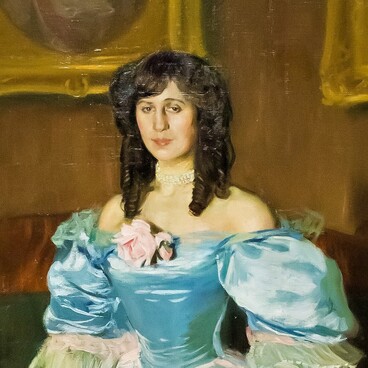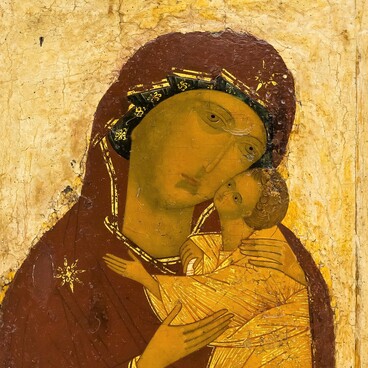‘Hercules’ was painted by a French painter Nicolas Bernard Lépicié in 1772. He depicted the most famous hero of ancient Greek myths — Hercules, who was half-god, half-man.
Other artists mainly showed Hercules during his acts of bravery as a strong, muscular and young man. Lépicié decided to forgo this tradition. He portrayed the hero as an adult, sitting on a cloud and welcomed by gods for all his accomplishments. The mighty nude figure is slightly covered with a lion’s skin, which reminds the viewers of the first of the twelve labors — the battle with the huge Nemean lion that lived near the city of Nemea and devastated its surroundings.
In the case of this painting, the artist did not abide by the aesthetic principles of classicism where reason was valued much higher than feelings. Classicism painters created the composition with utmost attention to the detail: they calculated proportions of bodies, precision in anatomy, as well as color ratio according to special rules. In Lépicié’s painting, on the contrary, the sensuality prevails — the artist portrayed Hercules not as an ancient god with ideal proportions, but as a living, full-blooded person.
This idea was emphasized by the painter’s choice of technique — he created a painting with finest glazes, applying light layers of translucent paints onto the main color. This allowed him to create a layer of paint rich in depth and various hues. The color of the painting is harmoniously balanced: the warm tones of the hero’s body and the clouds seem to glow against the background of the silvery-blue sky.
Nicola Bernard Lépicié lived from 1735 to 1784. He is known as an outstanding French painter and engraver. In 1769, he entered the Royal Academy of Painting and Sculpture in Paris, and after graduating three years later, he became an assistant professor. He still held that position the year ‘Hercules’ was painted. Five years later, in 1777, the artist attained a professorship.
The artist became famous largely for portraits and everyday scenes, but his legacy also includes both religious and mythological paintings. ‘Hercules’ is an example of a mythological one. The painting was donated to the museum in 1962 from the collection of Andrey Likhachov.
Other artists mainly showed Hercules during his acts of bravery as a strong, muscular and young man. Lépicié decided to forgo this tradition. He portrayed the hero as an adult, sitting on a cloud and welcomed by gods for all his accomplishments. The mighty nude figure is slightly covered with a lion’s skin, which reminds the viewers of the first of the twelve labors — the battle with the huge Nemean lion that lived near the city of Nemea and devastated its surroundings.
In the case of this painting, the artist did not abide by the aesthetic principles of classicism where reason was valued much higher than feelings. Classicism painters created the composition with utmost attention to the detail: they calculated proportions of bodies, precision in anatomy, as well as color ratio according to special rules. In Lépicié’s painting, on the contrary, the sensuality prevails — the artist portrayed Hercules not as an ancient god with ideal proportions, but as a living, full-blooded person.
This idea was emphasized by the painter’s choice of technique — he created a painting with finest glazes, applying light layers of translucent paints onto the main color. This allowed him to create a layer of paint rich in depth and various hues. The color of the painting is harmoniously balanced: the warm tones of the hero’s body and the clouds seem to glow against the background of the silvery-blue sky.
Nicola Bernard Lépicié lived from 1735 to 1784. He is known as an outstanding French painter and engraver. In 1769, he entered the Royal Academy of Painting and Sculpture in Paris, and after graduating three years later, he became an assistant professor. He still held that position the year ‘Hercules’ was painted. Five years later, in 1777, the artist attained a professorship.
The artist became famous largely for portraits and everyday scenes, but his legacy also includes both religious and mythological paintings. ‘Hercules’ is an example of a mythological one. The painting was donated to the museum in 1962 from the collection of Andrey Likhachov.



